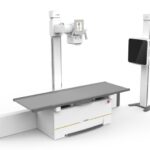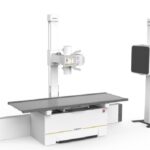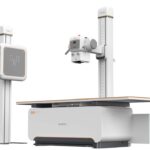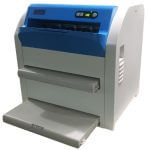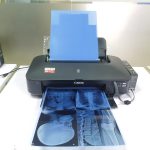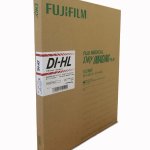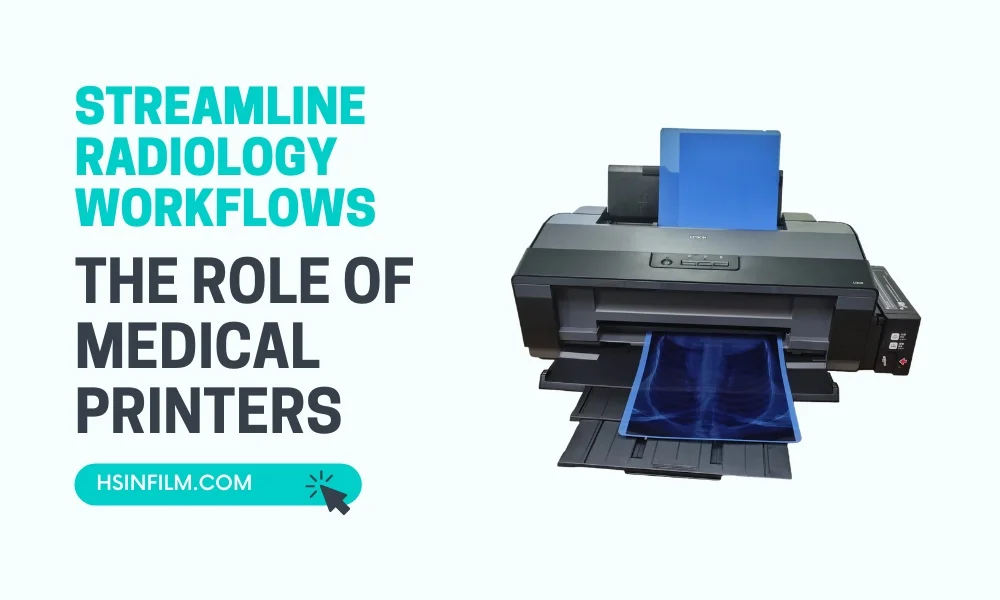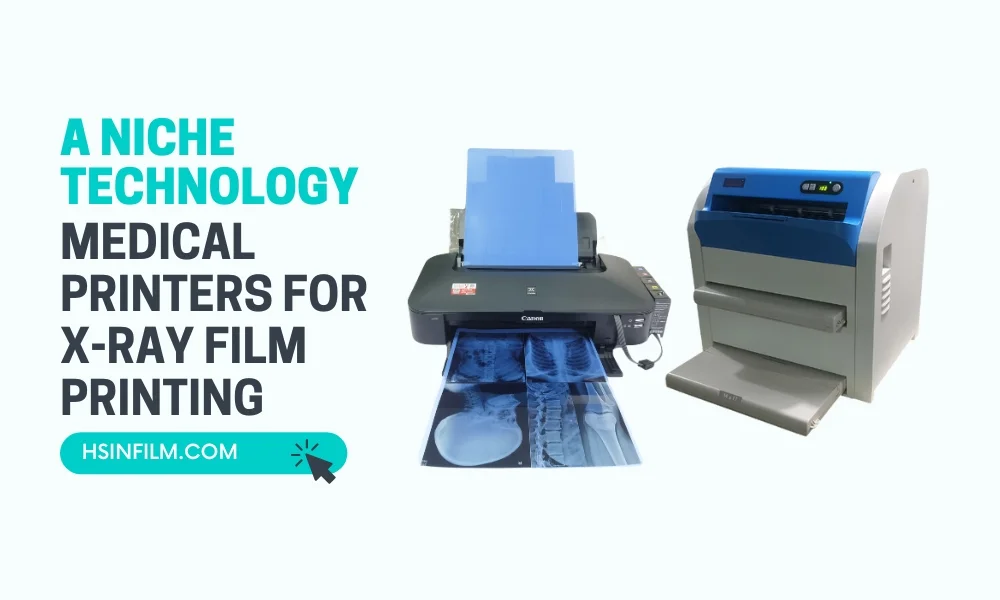The realm of medical X-ray films has witnessed remarkable advancements over the years. While traditional films laid the groundwork for diagnostic imaging, the integration of new technologies and materials has expanded the horizons of X-ray film applications. Let’s delve into the types and applications of medical X-ray films.
Table of Contents: Types and Applications of Medical X-ray Films
Brief Overview of X-ray Films in Medical Imaging
X-ray films are a fundamental tool in medical imaging, used to capture diagnostic images of internal body structures such as bones, teeth, and soft tissues. These films work by exposing a photosensitive emulsion layer, usually containing silver halide crystals, to X-ray radiation. When processed, the film reveals the variations in tissue density, allowing healthcare professionals to diagnose conditions like fractures, infections, and tumors. Despite advancements in digital imaging, X-ray films continue to play an important role in various diagnostic and therapeutic procedures, especially in settings where digital systems are not accessible.
Importance of Understanding Different Types and Applications
Understanding the various types of X-ray films is crucial for selecting the right film for each specific medical procedure. Different films, such as screen films, non-screen films, and specialized films like those used in mammography or dental imaging, offer unique properties in terms of sensitivity, contrast, and radiation dose. Each type is designed to optimize image quality for specific diagnostic tasks, making it essential for healthcare professionals to match the film type to the procedure. The proper selection ensures accurate diagnosis, minimizes patient exposure to radiation, and improves the overall efficiency of medical imaging practices.

Different Types and Applications of Medical X-Ray Films
X-ray films remain a crucial component of medical imaging, particularly in areas where digital systems have not yet fully replaced traditional methods. These films are specially designed to capture images of internal body structures, and various types of X-ray films are available to suit different diagnostic needs. Here’s a closer look at the different types of X-ray films and their applications:
1. Screen X-Ray Film
Overview:
Screen X-ray films are used in conjunction with intensifying screens. The screen emits light when exposed to X-rays, reducing the amount of radiation needed to form an image. This type of film is coated with silver halide crystals, which interact with the light to produce diagnostic images.
Composition:
Screen X-ray films are designed to be used with intensifying screens. These films contain a base of polyester or cellulose acetate, coated with a layer of silver halide crystals suspended in an emulsion. The silver halides are activated by light emitted from the intensifying screens, which reduce the amount of radiation exposure required.
Sensitivity:
Screen films are highly sensitive to light but less sensitive to direct X-ray exposure. The light emitted by the intensifying screens enhances the image formation process, allowing for lower radiation doses. Sensitivity can vary depending on the size of the silver halide crystals; larger crystals offer higher sensitivity but reduced image resolution.
Contrast Characteristics:
Screen films offer a broad range of contrast levels. The contrast is determined by the type of screen and the film’s silver halide composition. Screen films typically have lower contrast than non-screen films but provide better image brightness.
Applications:
- General Radiography: Commonly used in chest, abdominal, and skeletal imaging.
- Orthopedic Imaging: Ideal for capturing detailed images of bones and joints.
- Lung and Heart Imaging: Used in chest X-rays to diagnose respiratory and cardiovascular issues.
Advantages:
- Reduces radiation exposure
- Suitable for larger anatomical areas
Disadvantages:
- Lower resolution compared to non-screen films
- Requires intensifying screens for image formation
2. Non-Screen X-Ray Film (Direct Exposure Film)
Overview:
Non-screen or direct exposure films do not use an intensifying screen, making them more sensitive to X-ray radiation itself. These films have a thicker emulsion layer with more silver halide crystals, offering higher image resolution.
Composition:
Non-screen X-ray films, also known as direct exposure films, do not rely on intensifying screens. These films have a thicker emulsion layer, with a higher concentration of silver halide crystals that are directly exposed to X-ray photons. This type of film is designed for higher detail resolution.
Sensitivity:
Non-screen films are less sensitive than screen films, as they are directly exposed to X-rays rather than light from an intensifying screen. This requires higher radiation doses for image formation, but it results in better detail and sharper images.
Contrast Characteristics:
Non-screen films generally provide higher contrast than screen films. This makes them ideal for capturing fine details in small areas, such as dental images or extremities.
Applications:
- Dental Imaging: Often used in intraoral dental X-rays, where high detail and sharpness are essential.
- Extremity Imaging: Used in imaging small body parts like hands, feet, and facial bones.
- Mammography: In certain cases, non-screen films may be used to capture high-detail breast images.
Advantages:
- High-resolution images with great detail
- Provides sharp, clear images for small areas
Disadvantages:
- Higher radiation doses required
- Not suitable for large anatomical areas
3. Mammography X-Ray Film
Overview:
Mammography films are specifically designed for breast imaging. They are typically used with mammography machines and single intensifying screens to enhance soft tissue contrast, allowing for early detection of abnormalities in breast tissue.
Composition:
Mammography films are designed specifically for breast imaging and are used with dedicated mammography X-ray machines. These films have a fine-grain emulsion made of silver halide, optimized for capturing soft tissue contrast. Mammography films often feature a single emulsion layer to enhance image clarity and minimize scatter.
Sensitivity:
Mammography films are highly sensitive to low-energy X-rays, which are used to better visualize soft tissues. The films are typically used with a single intensifying screen to maintain image sharpness and contrast.
Contrast Characteristics:
Mammography films provide exceptional contrast, which is necessary for detecting subtle differences in breast tissue. This high contrast allows radiologists to detect tumors, cysts, and other abnormalities at early stages.
Applications:
- Breast Cancer Screening: Key tool in detecting breast cancer, cysts, and tumors.
- Diagnostic Mammograms: Used when abnormalities are detected during routine screenings.
Advantages:
- Excellent contrast for visualizing soft tissues
- High sensitivity to low-energy X-rays used in mammography
Disadvantages:
- Requires specialized equipment
- Limited to breast imaging applications
4. Dental X-Ray Film
Overview:
Dental X-ray films are smaller in size and are designed to capture detailed images of the teeth and surrounding bone structure. These films provide high contrast and clarity, making it easier to identify dental issues like cavities, infections, and misalignments.
Composition:
Dental X-ray films are specialized films designed for intraoral or extraoral dental imaging. They have a protective lead foil backing to minimize backscatter radiation. The emulsion layer is coated with fine silver halide crystals that provide high contrast and sharpness.
Sensitivity:
Dental films are highly sensitive to X-ray radiation and are often used without intensifying screens. This ensures that dental structures, such as teeth and surrounding bones, are imaged with high resolution.
Contrast Characteristics:
Dental films provide excellent contrast for visualizing teeth, bone structure, and dental pathology. The films are optimized to differentiate between hard tissues like enamel and softer tissues like pulp and gum.
Applications:
- Intraoral X-Rays: Used inside the mouth to capture detailed images of teeth, roots, and jawbone.
- Bitewing X-Rays: Used to detect cavities between teeth.
- Periapical X-Rays: Focuses on one or two teeth to reveal the entire tooth structure, including the root.
- Panoramic X-Rays: Offers a broad view of the entire mouth and jaw in a single image.
Advantages:
- High contrast for identifying dental problems
- Easy to use in small, confined areas like the mouth
Disadvantages:
- Requires higher radiation doses than screen films
- Limited to dental imaging
5. Fluoroscopic X-Ray Film
Overview:
Fluoroscopic X-ray films are used in dynamic imaging procedures, such as fluoroscopy, where continuous X-ray exposure is necessary to view real-time motion within the body. These films capture images of moving organs, blood flow, or the digestive system in action.
Composition:
Fluoroscopic films are used to record real-time X-ray images during fluoroscopic procedures. These films are typically used with a fluoroscopy machine, which captures continuous X-ray images. The films have a special coating to handle the dynamic imaging environment of fluoroscopy.
Sensitivity:
Fluoroscopic films are less sensitive to static images and are designed to capture moving images. The film is exposed to lower radiation doses over a longer period, requiring specialized emulsion coatings for clarity.
Contrast Characteristics:
These films are designed for moderate contrast, focusing on movement rather than high-detail resolution. The contrast is sufficient for real-time imaging of organs and blood vessels.
Applications:
- Angiography: Imaging of blood vessels to detect blockages or abnormalities.
- Gastrointestinal Studies: Used in barium swallows and enemas to visualize the digestive tract.
- Cardiac Procedures: Essential for guiding catheter placement in heart surgeries.
Advantages:
- Provides real-time imaging
- Useful in diagnostic and interventional procedures
Disadvantages:
- Requires prolonged exposure to radiation
- Lower image resolution compared to static X-ray films
Different types of X-ray films serve various roles in medical imaging, each designed to meet specific diagnostic needs. Screen films are ideal for general imaging with reduced radiation exposure, while non-screen films offer high detail resolution for dental or extremity imaging. Mammography films focus on soft tissue contrast, crucial for breast cancer detection, while fluoroscopic films provide real-time imaging for dynamic procedures. Understanding these differences is essential for optimizing diagnostic accuracy and improving patient outcomes in medical settings.
Key Differences in Medical Dry Film, Thermal Film, and Laser Film
| Film Type | Composition | Sensitivity | Contrast | Applications | Advantages | Disadvantages |
|---|---|---|---|---|---|---|
| Medical Dry Film | Polyester base with heat-sensitive layers | Moderate sensitivity to heat | High contrast | General radiology, mammography, portable systems | Chemical-free, cost-efficient, portable | Lower resolution, sensitive to storage conditions |
| Thermal Film | Polyester base with thermo-sensitive coating | High sensitivity to heat | Moderate to high contrast | Ultrasound, MRI, dental imaging | Fast processing, cost-effective, eco-friendly | Heat-sensitive, limited resolution |
| Laser Film | Polyester base with silver halide emulsion | High sensitivity to laser light | Exceptional contrast | CT, MRI, mammography, orthopedic imaging | High resolution, durable, precise imaging | Expensive, chemical processing required |
Check our high quality and affordable medical X-ray films
Practical Tips for Selecting the Appropriate X-ray Film for Specific Medical Procedures
Choosing the right X-ray film for a specific medical procedure is essential for producing high-quality images and ensuring diagnostic accuracy. Here are practical tips to help healthcare professionals select the appropriate X-ray film for various applications:
1. Consider the Type of Procedure
Each medical procedure has different imaging requirements, and selecting the right film depends on the type of anatomy or condition being examined.
- For General Radiography (Chest, Abdomen, Bones): Use Screen X-ray Films. These films provide sufficient detail for larger anatomical areas while reducing radiation exposure.
- For Dental Imaging: Non-screen films or specialized dental X-ray films are ideal due to their high resolution and ability to capture detailed images of teeth, roots, and jawbone structures.
- For Breast Imaging (Mammography): Choose Mammography X-ray Films, which offer excellent contrast to visualize soft tissues and detect early breast cancer.
- For Dynamic Imaging (Fluoroscopy): Opt for Fluoroscopic X-ray Films, which capture real-time motion, such as in gastrointestinal or cardiac procedures.
2. Evaluate Image Quality Requirements
Different films provide varying levels of image detail, contrast, and sharpness. Consider the level of detail needed for a specific diagnosis:
- High Detail for Small Areas: For procedures requiring high detail, such as dental X-rays or extremity imaging, non-screen films are ideal due to their superior resolution.
- Soft Tissue Contrast: For imaging soft tissues, like in mammography, films designed for higher contrast and sensitivity to low-energy X-rays are preferred.
3. Account for Radiation Dose
Patient safety is a priority, and reducing radiation exposure is critical, especially in routine or sensitive procedures.
- Low Radiation for Routine Imaging: Screen X-ray films reduce the radiation dose by using an intensifying screen. They are perfect for routine imaging like chest or abdominal X-rays, where the highest detail may not be necessary.
- Higher Radiation for High-Detail Procedures: If high detail is required (e.g., dental imaging), non-screen films should be used, but be mindful of the higher radiation dose.
4. Consider Film Sensitivity and Speed
Film sensitivity (or speed) determines how much radiation is required to produce a visible image. Faster films require less radiation but may produce slightly lower image quality.
- High-Speed Films: Best suited for routine imaging where quick results and minimal radiation are required. Faster films are ideal for general diagnostic purposes but may sacrifice some detail.
- Slow-Speed Films: Used for detailed diagnostic purposes, such as dental or mammography imaging, where high-resolution images are needed. These films require more radiation but provide superior image clarity.
5. Match Film Size to Imaging Area
Different procedures require different film sizes. It’s essential to select the film size that matches the anatomical area being imaged.
- Large Anatomical Areas: For areas like the chest or abdomen, select large films (e.g., 14×17 inches) to capture the entire region in one exposure.
- Small Anatomical Areas: Use small films (e.g., 8×10 inches or smaller) for imaging extremities or dental structures.
6. Consider Compatibility with Imaging Equipment
Ensure the film you select is compatible with the X-ray equipment and intensifying screens used in your practice.
- Check Film and Screen Compatibility: For procedures requiring screen X-ray films, ensure that the film is compatible with the intensifying screens being used to optimize image quality and radiation efficiency.
- Digital Compatibility: If your facility is transitioning to digital imaging but still uses traditional films, make sure the film works with digitizers or film scanners for digital storage and sharing.
7. Evaluate Film Processing Needs
The type of film selected will influence the processing methods required. Some films need specific developers or fixers, while others are designed for automatic processing systems.
- Automatic Processing: If your practice uses automatic processors, ensure that the films are compatible with these machines for quick and efficient development.
- Manual Processing: If manual processing is used, select films that are appropriate for hand development, especially if consistency and quality control are critical in your practice.
8. Factor in Long-Term Storage and Archiving
Consider how long the images need to be stored and how easily they can be retrieved in the future.
- For Archiving: Choose films that are durable and less prone to deterioration. If duplicating or storing images long-term, consider using duplication X-ray films to create backup copies for archival purposes.
9. Cost and Availability
Cost can be a significant factor, especially for facilities that need to balance quality with budgetary constraints. Select films that meet your needs while staying within budget.
- For Cost-Effective Solutions: Screen X-ray films are generally more affordable and can reduce radiation dose, making them suitable for high-volume imaging environments.
- For Specialized Needs: More expensive films like mammography films or non-screen films may be necessary for specific applications where detail and contrast are critical.
Selecting the appropriate X-ray film for specific medical procedures requires balancing factors like image quality, radiation dose, film size, and compatibility with equipment. By considering the type of procedure, the level of detail required, and patient safety, healthcare professionals can make informed choices that lead to accurate diagnoses and optimized workflow in their medical practices.
The Impact of Film Processing Techniques on Image Quality and Diagnostic Accuracy
Film processing is a critical step in medical imaging that can significantly affect the quality of X-ray films and, consequently, the diagnostic accuracy. Proper handling during the development stage ensures that the final image is of high quality, free from artifacts, and suitable for accurate interpretation by healthcare professionals. Let’s explore how different film processing techniques impact image quality and diagnostic outcomes:
1. Chemical Processing
Traditional X-ray films require chemical processing, which involves the development, fixing, washing, and drying stages. Each step can influence the final image in various ways.
A. Development
- Impact on Image Contrast: The development process brings out the latent image created when X-rays interact with the film. The duration and temperature of the development process directly impact the contrast of the image. If the film is underdeveloped, it can lead to low contrast, making it difficult to distinguish between different tissue densities. Overdevelopment, on the other hand, can result in excessively high contrast, which may obscure fine details.
- Artifacts: Uneven development, caused by improper chemical agitation or developer depletion, can lead to streaks or patches on the film, reducing its diagnostic utility.
B. Fixing
- Image Stability: The fixing process stabilizes the image and removes any undeveloped silver halide crystals. If the film is not fixed properly, it can lead to image degradation over time, affecting long-term storage and future reference.
- Impact on Clarity: Poor fixing can leave residual chemicals on the film, causing cloudiness or discoloration, which diminishes image clarity and may lead to inaccurate diagnoses.
C. Washing and Drying
- Removing Residual Chemicals: Inadequate washing of the film can leave chemical residues that may cause the image to deteriorate over time. Streaks or stains from these residues can obscure important anatomical details, reducing the diagnostic accuracy.
- Drying Artifacts: Uneven drying of the film can lead to physical distortions or surface defects, such as bubbles or cracks, which compromise the film’s diagnostic value.
2. Automatic Processing
Automatic film processors are designed to streamline the development process by maintaining consistent conditions for temperature, timing, and chemical replenishment. However, the quality of the final image still depends on several factors:
A. Consistency in Image Quality
- Benefit of Standardization: Automatic processors ensure uniform chemical application and consistent development times, which typically results in more reliable and repeatable image quality. This consistency can enhance diagnostic accuracy by reducing the variability introduced by human error in manual processing.
- Impact of Maintenance: If automatic processors are not properly maintained, they can produce uneven film development. Residual chemical buildup or improper calibration can lead to processing artifacts, streaks, or inconsistent contrast, compromising diagnostic outcomes.
B. Throughput and Efficiency
- Faster Processing: Automatic systems are faster than manual processing, which allows for quicker turnaround times for diagnostic reports. However, faster processing may sometimes sacrifice image quality if maintenance and calibration are not performed regularly.
3. Manual Processing
Manual processing is still used in some settings, especially in low-resource environments. While it offers more control over each step, it also introduces variability and increases the likelihood of human error.
A. Flexibility
- Customizing Development Time: With manual processing, technicians can adjust development times based on the exposure of the film, which is beneficial for optimizing image quality for underexposed or overexposed films. However, without precise timing, manual development can result in inconsistent image quality.
B. Challenges of Human Error
- Potential for Inconsistent Results: Variations in chemical concentration, temperature, or agitation can result in inconsistencies in image contrast, sharpness, and overall quality. This unpredictability can lead to suboptimal images that may obscure important diagnostic information.
4. Temperature and Humidity Control
Both chemical and automatic film processing are sensitive to environmental conditions like temperature and humidity, which can influence the outcome of the developed image.
A. Impact on Image Contrast and Sharpness
- Temperature: Higher temperatures during development can increase the activity of the chemicals, speeding up the process and potentially leading to overdevelopment, which increases contrast but may cause loss of fine details. Conversely, low temperatures can cause underdevelopment, resulting in low contrast and less diagnostic value.
- Humidity: Excessive humidity can cause moisture to accumulate on the film, leading to blotches or softening of the film material. If humidity is too low, it can lead to static electricity discharge, creating artifacts on the film. Both scenarios can affect image clarity and diagnostic accuracy.
5. Impact of Darkroom Conditions
The darkroom environment, where manual or automatic film processing takes place, also plays a significant role in ensuring optimal image quality.
A. Light Leaks
- Fogging: Exposure to light during any stage of film processing can cause fogging, which reduces contrast and obscures details in the final image. Even small light leaks in the darkroom can lead to overexposure of the film, rendering it unusable for diagnosis.
B. Dust and Contaminants
- Physical Artifacts: Dust particles, hair, or other contaminants in the darkroom environment can leave marks on the film, creating physical artifacts that compromise the diagnostic accuracy of the image. Proper cleanliness and environmental control are essential to prevent such issues.
6. Film Quality and Chemical Quality
The quality of the X-ray film and processing chemicals also influences the final image.
A. Fresh Chemicals
- Optimal Contrast and Detail: Fresh chemicals produce the best image quality, with clear contrasts between tissues and well-defined anatomical structures. Using outdated or improperly mixed chemicals can lead to incomplete development, low contrast, and blurry images, affecting diagnostic precision.
B. Film Shelf Life
- Impact on Sensitivity: Films have a limited shelf life, and using expired films can result in a loss of sensitivity, requiring higher radiation doses and potentially leading to underexposed or grainy images.
By understanding the intricacies of the film development process and maintaining strict control over variables such as temperature, timing, and chemical composition, healthcare professionals can ensure optimal diagnostic accuracy and patient safety.
Proper Storage and Handling of X-ray Films to Maintain Quality and Prevent Degradation
Ensuring the longevity and quality of X-ray films requires careful attention to their storage and handling. Incorrect storage conditions can lead to image degradation, rendering the films less useful for diagnostic purposes. Below are key guidelines on how to properly store and handle X-ray films to maintain their quality and prevent degradation.
1. Optimal Storage Conditions
X-ray films are highly sensitive to environmental factors such as temperature, humidity, light, and physical stress. Following proper storage protocols is essential to preserving their quality.
A. Temperature Control
- Ideal Range: X-ray films should be stored at a temperature between 10°C and 21°C (50°F and 70°F). Temperatures outside this range can lead to physical changes in the film’s emulsion layer, affecting the image quality.
- Avoid Extreme Temperatures: High temperatures can cause the film emulsion to soften and degrade, leading to blurriness and loss of contrast in the images. Cold temperatures, on the other hand, can make the film brittle, increasing the risk of physical damage.
B. Humidity Levels
- Ideal Humidity Range: The relative humidity for storing X-ray films should be maintained between 30% and 50%. Excessive humidity can cause the films to become sticky, leading to emulsion damage or the formation of mold and mildew. Low humidity can lead to static electricity buildup, which can create unwanted artifacts on the films.
- Consistent Humidity: Fluctuations in humidity levels can cause the films to expand and contract, which may result in curling or warping, negatively impacting the diagnostic image quality.
C. Light Exposure
- Protection from Light: X-ray films are sensitive to light, especially ultraviolet (UV) radiation. They should be stored in opaque, lightproof containers to prevent exposure to ambient or direct light, which can cause fogging and reduce image contrast. Films exposed to light before processing are often unusable.
2. Proper Handling of X-ray Films
Handling X-ray films with care is critical in preventing physical damage, contamination, and image artifacts.
A. Handling Procedures
- Wear Gloves: Always handle X-ray films while wearing clean, dry gloves to avoid transferring oils, moisture, or dirt from your hands to the film surface. Fingerprints on the film can cause permanent marks that degrade the quality of the image.
- Hold by the Edges: Hold X-ray films by their edges to prevent touching the emulsion-coated surface. Even slight pressure on the emulsion layer can cause damage, resulting in scratches, creases, or physical distortion.
B. Minimizing Physical Damage
- Avoid Bending or Folding: X-ray films are delicate and should not be bent, folded, or rolled. Physical creases or folds in the film can create permanent marks that affect the clarity of the image.
- Use Protective Sleeves: When not in use, X-ray films should be stored in protective sleeves or envelopes specifically designed for medical films. This prevents physical wear and tear and reduces the risk of scratches, dust, and contaminants.
3. Proper Organization and Storage Techniques
Effective organization and storage help ensure that X-ray films are easily accessible while being protected from damage.
A. Vertical Storage
- Upright Position: X-ray films should be stored in an upright (vertical) position, similar to how books are stored on a shelf. Storing films flat or stacking them can cause pressure and deformation, especially for large film stacks, which can lead to curling or warping over time.
B. Labeling and Indexing
- Accurate Labeling: Ensure that all X-ray films are properly labeled with details such as patient name, date, and procedure type. Use permanent markers or preprinted labels to avoid the risk of smudging or fading.
- Organized Indexing: Films should be organized in a systematic way, either alphabetically, by date, or by procedure type. This makes retrieval more efficient and helps reduce the handling of films, minimizing the risk of damage.
C. Secure Packaging
- Durable Containers: Store X-ray films in sturdy, waterproof containers or cabinets to protect them from environmental factors, including accidental spills or physical damage. Ensure that the storage area is free from dust and pests that could compromise the quality of the films.
4. Long-term Storage Considerations
For films that need to be stored for extended periods, additional precautions are necessary to prevent degradation.
A. Archival Standards
- Storage Rooms: For long-term storage, a climate-controlled room is ideal. Archive rooms should have strict controls over temperature, humidity, and light to ensure that films remain in good condition over the years.
- Film Longevity: Many X-ray films have a shelf life of up to 10 years, provided they are stored correctly. However, prolonged exposure to poor conditions may lead to deterioration, such as discoloration, fading, and loss of contrast.
B. Digital Backup
- Digital Archiving: It is advisable to digitize X-ray films and store them in a secure electronic format for long-term archival purposes. Digital backups can be stored in cloud-based systems or local servers to ensure that patient data remains accessible, even if the physical films degrade over time.
5. Avoiding Common Storage Errors
Understanding the typical mistakes in X-ray film storage can help prevent damage and ensure that films remain diagnostic-grade.
A. Exceeding Storage Capacity
- Overcrowded Storage: Overcrowding film storage spaces can lead to accidental bending or pressure on the films. Always ensure that the storage shelves are not overloaded and that there is enough space to retrieve and replace films without difficulty.
B. Inconsistent Climate Control
- Fluctuating Conditions: Failure to maintain consistent temperature and humidity levels can result in film degradation, such as curling, cracking, or moisture damage. It is essential to use climate-controlled storage areas that maintain stable conditions year-round.
By controlling environmental factors such as temperature, humidity, and light exposure, and by practicing careful handling and organization techniques, healthcare facilities can prevent film degradation and extend the usable life of their X-ray film archives. Ensuring that films are stored and handled correctly not only preserves their diagnostic value but also reduces the need for costly re-imaging procedures.
Conclusion: Navigating the Dynamic World of X-Ray Films
Despite the rapid technological advancements, the essence and utility of X-ray films remain pivotal in diagnostic imaging. As we stand at the crossroads of tradition and innovation, it’s evident that X-ray films, in their varied forms, will continue to shape the future of diagnostic excellence.

